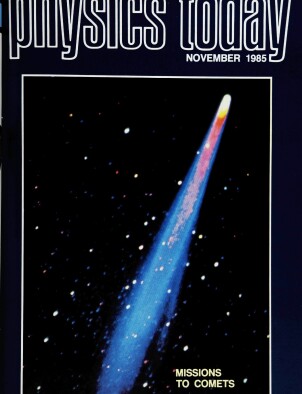The Physics Classroom Revisited: Have We Learned Our Lesson?
DOI: 10.1063/1.880992
Science is regarded as a difficult subject by students, and most graduate from high school with only a very limited knowledge about it. The study of science in secondary schools can be compared to a pyramid with physics at the apex. It is nice to be on top. Unfortunately, though, there are not many there to keep each other company.
This article is only available in PDF format
References
1. W. C. Kelly, PHYSICS TODAY, March 1955, p. 12.
2. G. Holton, PHYSICS TODAY, March 1967, p. 31.
3. National Academy of Sciences, “Science and Mathematics in the Schools,” undated report.
4. AIP Manpower Statistics Division, “1983–84 Survey of Physics and Astronomy Bachelor’s Degree Recipients,” March 1985.
5. Educational Testing Service, Princeton, N.J., private communication.
6. J. E. Williams, F. E. Trinklein, H. C. Metcalfe, Modern Physics, Holt, Rinehardt and Winston, New York (1980).
7. F. Friedman quoted by A. Arons in PHYSICS TODAY, June 1960, p. 20.
8. A. Arons, PHYSICS TODAY, June 1960, p. 20.
9. U. Haber‐Schaim, PHYSICS TODAY, March 1967, p. 26.
10. Harvard Project Physics Progress Report (Harvard University, undated). This report contains drafts of talks by G. Holton, F. Watson and F. J. Rutherford for the AAPT meeting of 1 February 1967.
11. “The teaching of physics in schools,” PHYSICS TODAY, January 1961, p. 30.
12. R. N. Shepard, American Psychologist, February 1978, p. 125.
13. PHYSICS TODAY, October 1966, p. 9.
14. See J. S. Rigden, Am. J. Phys. 52, 683 (1984).https://doi.org/AJPIAS
More about the Authors
George Pallrand. Rutgers University.
Peter Lindenfeld. Rutgers University.




